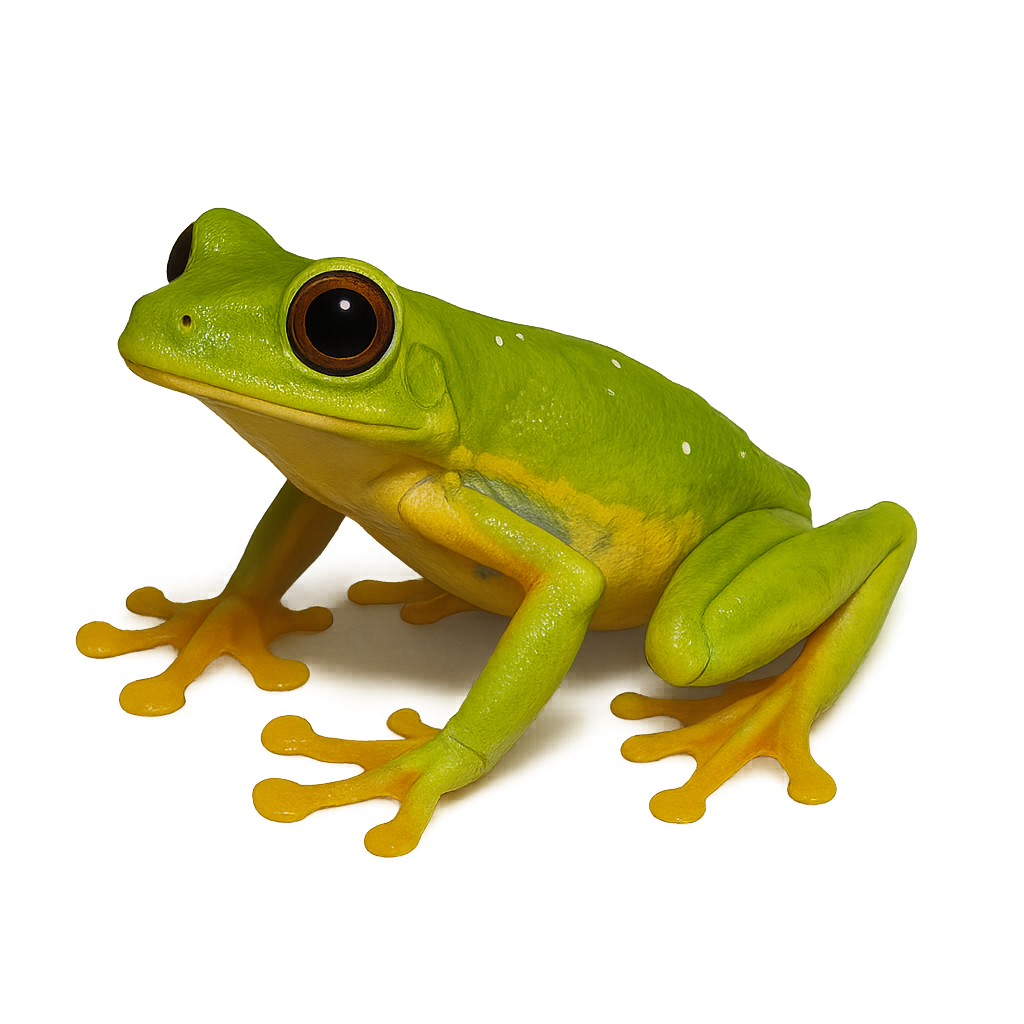Observe and photograph a species in its natural habitat
Learn where and when to observe a species in the wild, how to recognize it in the field, and what habitats it lives in. Get photography tips adapted to its behavior and capture stunning images without disturbing the animal. For full details, open the complete profile in the WildlifePhotographer app.
Gliding Tree Frog
Scientific name: Agalychnis spurrelli

IUCN Status: Least Concern
Family: HYLIDAE
Group: Amphibians
Shyness: Suspicious
Safe distance: 10 m
Breeding season / Courtship: 05.05-15.07
Gestation: 8 à 10 jours
Births: 15.05-15.07
Habitat:
Humid tropical forests, canopy, temporary pools
Description:
The Gliding Tree Frog is a medium-sized nocturnal arboreal frog, measuring between 5 and 8 cm. It has bright green dorsal coloration during the day, turning darker at night, with orange or bluish hues on its flanks and limbs. Its large red eyes and webbed feet enable it to "fly" from tree to tree by gliding. This species inhabits humid tropical forests in Costa Rica, Panama, Colombia, and Ecuador, between 15 and 750 m elevation. It resides in the canopy and descends to the ground to breed in temporary pools formed by rains. Breeding is explosive, with thousands of individuals gathering in a single night to lay eggs on leaves overhanging water. Tadpoles fall into the water upon hatching. Although listed as Least Concern by the IUCN, this species is locally threatened by deforestation and habitat loss.
Recommended lens:
>=Macro
Photography tips:
Use a macro lens to capture details of the Gliding Tree Frog, especially its red eyes and webbed feet. Prefer nocturnal shots with soft lighting to avoid disturbing the animal. Be discreet and respect its natural habitat.
Ready to take action?
Choose your platform and start your free trial today



